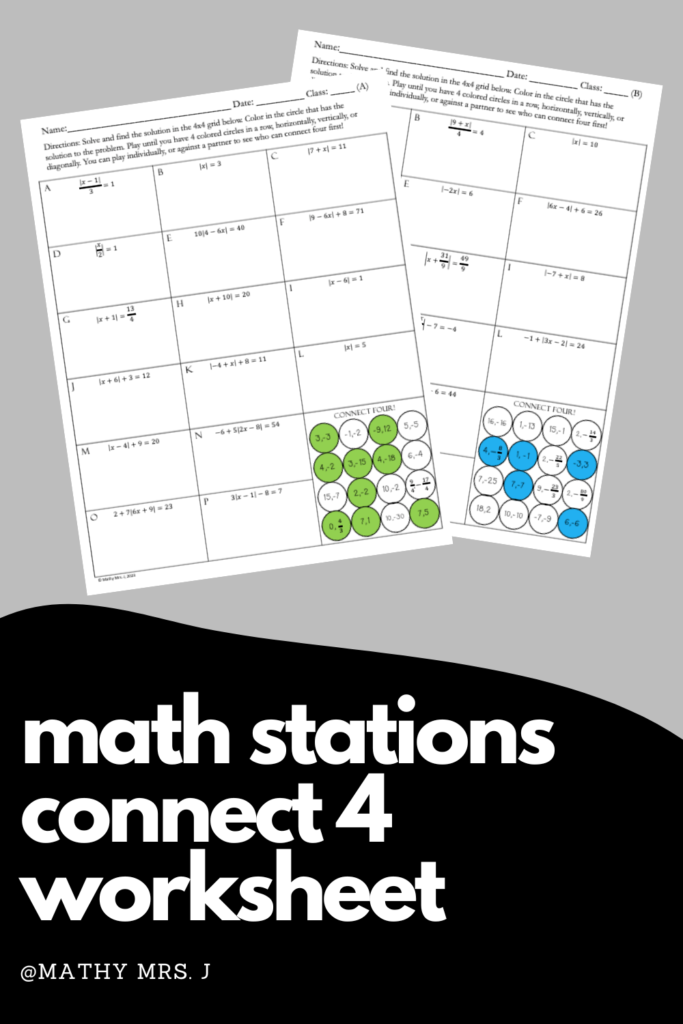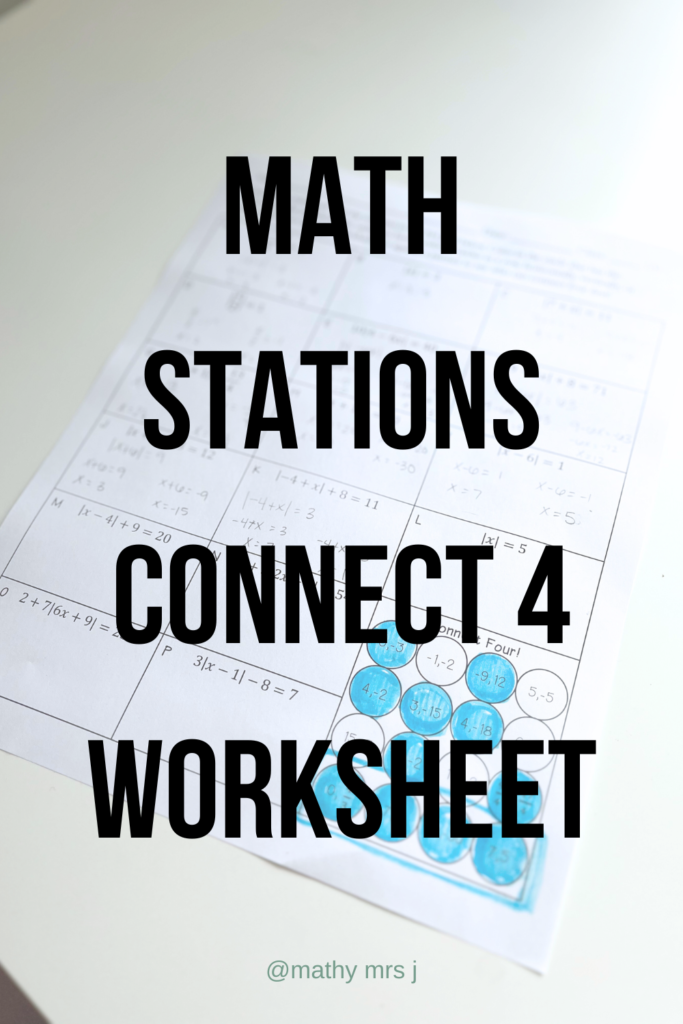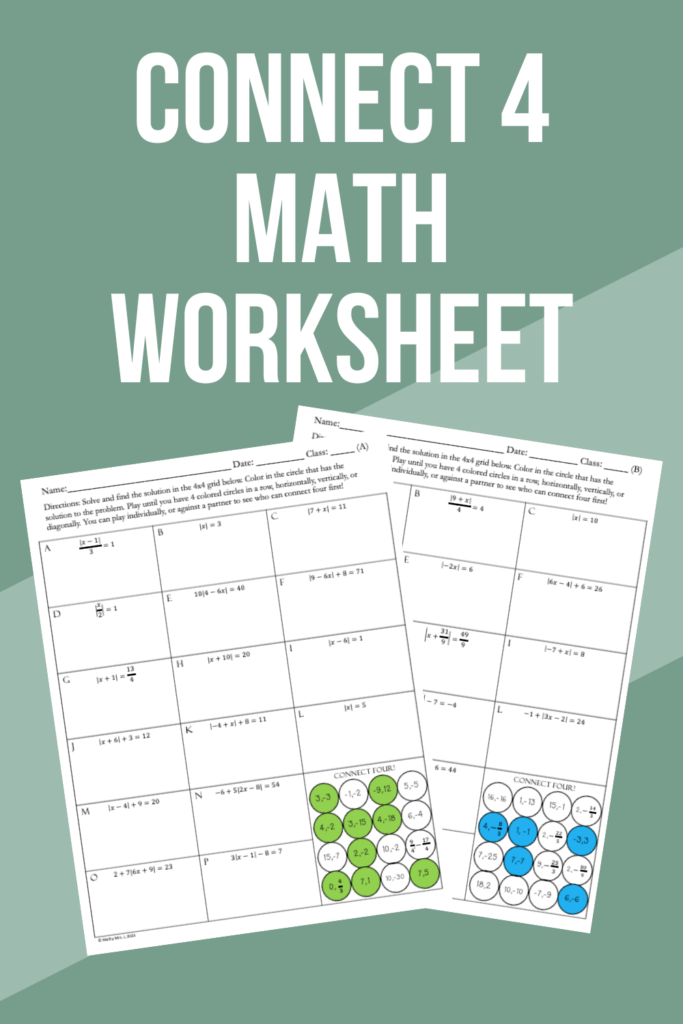Click here to access FREE Connect 4 Worksheets – perfect for stations!
One of my FAVE ways to break up an otherwise monotonous lesson is with math stations. I’ve used math stations in Algebra 2 as both instruction and practice, but one of the problems I had was finding enough activities for each station. Here are some tips for creating fun math stations. First, let’s see why math stations are useful in the classroom.

What are Math Stations?
Math stations, also known as math centers or math rotations, are structured learning environments where students rotate through a series of stations to work on different math activities. Each station focuses on a specific concept or skill, allowing students to engage with the material in various ways. Math stations provide an opportunity to address diverse learning styles and abilities, offering a more personalized learning experience.
Benefits of Using Math Stations
- Active Engagement: Math stations promote active participation and hands-on learning. Students interact with the material through games, puzzles, and interactive activities.
- Differentiation: Every student has a unique learning pace and style. Math stations allow teachers to differentiate instruction by tailoring activities to individual needs, ensuring that every student can progress at their own speed.
- Collaboration: Math stations encourage collaboration and peer interaction. Students can work together to solve problems, discuss concepts, and explain solutions, promoting a deeper understanding of the material.
- Varied Assessment: Math stations provide multiple opportunities for assessment. Teachers can observe student performance at different stations to gain insights into their strengths and areas that may require additional support.
- Concept Reinforcement: The varied nature of math station activities helps reinforce algebraic concepts. By approaching concepts from different angles, students develop a more comprehensive understanding of the material.

Types of Math Station Activities
Okay, let’s start gathering ideas for your next math stations lesson! Here’s a list of types of activities you can include as a station. I would use 2-4 activities depending on the difficulty of the lesson, the amount of time you have for that day’s class, and the level of your students. Less is more – don’t overwhelm the students with a hundred tasks! Choose just enough activities to keep the day interesting!
- Task Cards: Students can use them to quiz each other. Click here to read about 10 Ways to Use Differentiated Task Cards.
- Matching Cards: Students can practice independently and use the matching cards to quiz themselves.
- Game Worksheets: A premade Connect 4 or maze worksheet is perfect for one of the stations.
- Video: Watch a Khan Academy video reviewing or extending the topic. You can even assign questions in EdPuzzle!
- Student as Teacher: Have the student write a practice question related to the lesson topic and include an answer key.
- Whiteboards: Have students work out their homework problems on a whiteboard.
- IXL: Have students complete practice problems on the computer using IXL or a similar website.

Other Tips for Math Stations in Algebra 2
- Diverse Activities: Design a variety of activities that align with the Algebra 2 curriculum. These could include solving equations, graphing functions, practicing factoring, working with polynomials, and exploring quadratic equations.
- Clear Instructions: Create clear and concise instructions for each station. Include any necessary materials, guidelines, and objectives to ensure students understand the task at hand.
- Rotations: Divide your class into small groups and assign each group to a specific station. Set a timer for each rotation, allowing students to move to the next station when time is up.
- Monitoring and Support: As students work through the stations, move around the room to provide assistance, clarify doubts, and observe their progress. This also offers an opportunity to give real-time feedback.
- Reflection: After completing all the stations, gather the class to discuss their experiences. Ask questions about challenging concepts, interesting discoveries, and any questions that arose during the activity.
Tell me how you use math stations in your classroom! Let’s continue the conversation in the comments or on my social media: @mathymrs.j on IG.
Don’t forget to request access to my FREE resource library – click here!
Happy teaching!
Natasha
